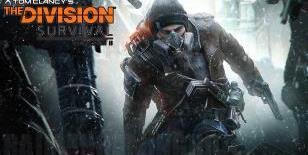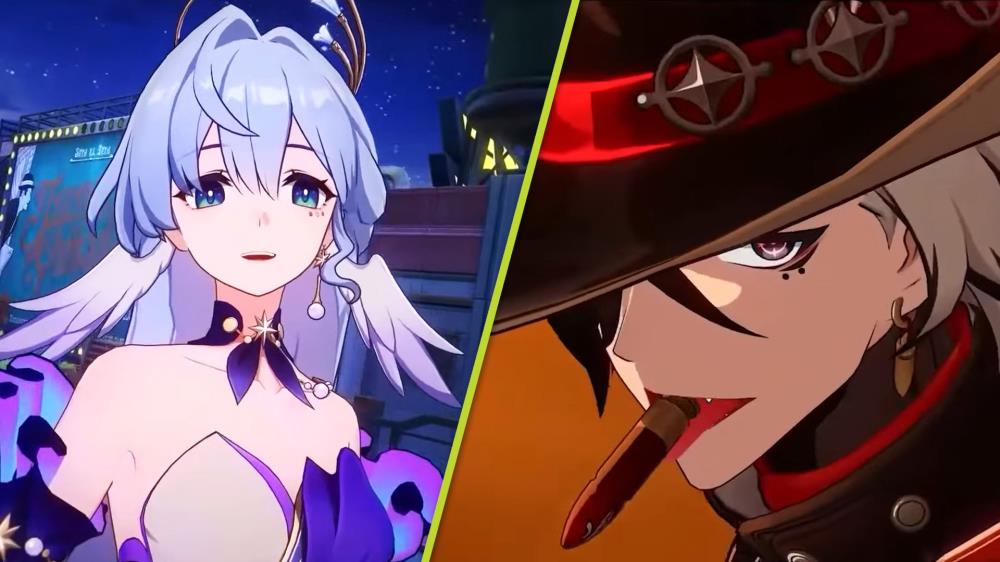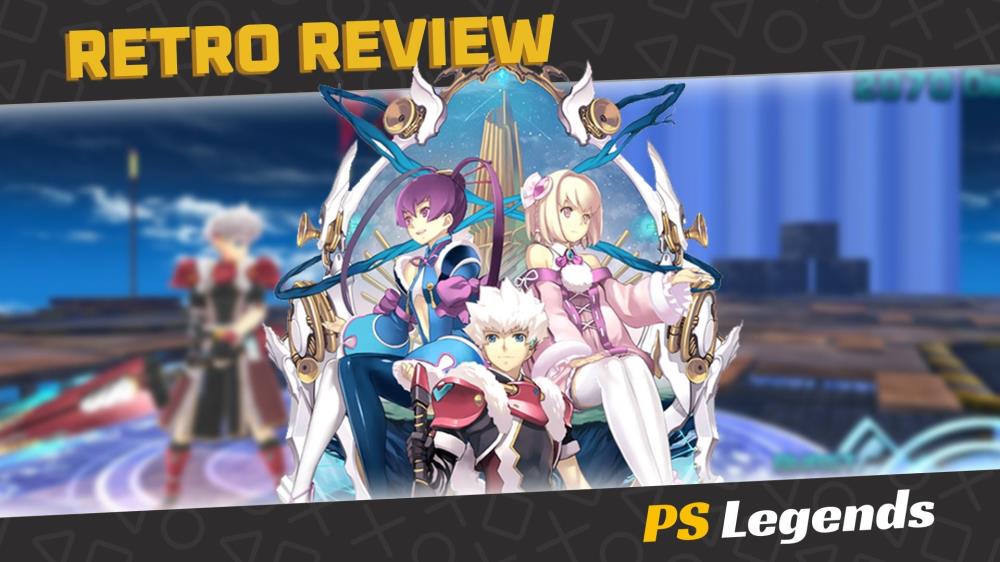
[Continued from Part 1: http://n4g.com/user/blogpos... ]
4. Health System—Furi (Xbox One)
Another great surprise of the year came from The Game Bakers’ boss battler: Furi. I can’t quite think of a more generic time in the way health has been handled in modern videogames. Although I should stress that doesn’t mean it’s unfitting across ALL games, the way in which it’s so safely assumed how action games will handle it beforehand is quite disappointing. Shooters rely on a regenerative health system too often, hack ‘n slashers typically have orbs dropped from enemies and/or chests, and whatever other typical idea you can consider.
The health structure here is married with the ideal of overcoming a boss phase. Success in draining the boss’s health meter first ends said phase and puts both parties back to full health; failure means your character, Rider, loses a life and the phase resets. Of course, Rider can also gain lost lives by beating a boss’s phase, meaning it technically takes two consecutive fails from a single phase to feel as though you’re falling backwards. Beyond a health refresh after each phase, health regains are possible from successful parries and green orbs oftentimes floating during a SCHUMP section.
What makes this design so fascinating is its inherent fairness. Even with enemies that feel tough as nails, it’s apparent the developers want players to succeed without sacrificing Furi’s challenge. Players who were cutting their teeth on one of the boss’s later phases—just barely succeeding—can feel rewarded by being put back on even ground with their opponent. Even if they ultimately lose, it’s not before having the opportunity to learn the tactics of that phase loop.
It’s also interesting for me because of how it contextualizes “health” to seem more like willpower. Your stamina bar refilling upon successful battles, the multi-phase structure of bosses being whittled down, getting a +1 health cube after a successful phase (unless your health cubes are full), all contribute to making this feel like a more fleshed-out cyber-samurai showdown than with a more typical action game formula. It’s all these little things that add up to making each fight feel more like a test of the will, which is mirrored by the themes of the story.
Furi’s health system goes a long way in feeling as though The Game Bakers left no stone unturned when crafting this title.
5. Systemized Racism—Mafia III
Before expatiating on Mafia III’s incorporation of racism, I should clarify that this is the game I have trouble recommending to most people (i.e. receiving a *RotteN* badge). It’s got great writing, for sure; but, it’s weighed down by having such a repetitive and generic open-world mission structure. Yet even with this caveat considered, I still can’t help but admire just how focused developer Hanger 13 had on honestly exploring race relations within New Bordeaux.
So just what does it mean for a game to “systemize” racism and what’s so special about the topic here? While it’s true other AAA games have utilized this theme before, the incorporation within Mafia III handles this more fittingly than many other titles. Instead of playing it up akin to moustache-twirling imagery it’s treated more as an invisible virus, seeped in the world in many palpable ways.
Beyond the obvious uses of the n-word, KKK members, etc. found in the confines of the campaign, focus ought to be considered for the background too. Multifarious details incorporated into the environment that make this late-60’s-era locale feel so realized:
-Racist banter on the local radio.
-NPC’s chit-chatting about racially-focused moments like Cpt. Kirk kissing Uhura in Star Trek.
-Despite taking place years after The Civil Rights Act of 1964, certain restaurants still having “No Colored Allowed” signs that’ll treat Lincoln Clay as trespassing should he stay for too long.
In the midst of being a typical power fantasy Mafia III still structures itself around race relations and the steadily-evolving societal norms of the late 60’s, from the main campaign to environmental design. And by putting a magnifying glass on this timeline in particular it avoids the pitfall of just saying “racism is bad, m’kay.” Racism in this specific context provides a clearer window into the particular struggles occurring not that long ago and wants to apprise how that’s shaped our world today.
6. Expansion II: Survival—The Division
After the enjoyable—if a bit underwhelming—first expansion released, The Division went through an improvement phase. Massive Entertainment undertook improving the quality of life end-game activities, general bug fixes, and more (7). This resulted in a delay to the second and third expansions. During the tempest that is the holiday shopping season, a six-month-old title was trying to entice shoppers with a new slice of content that may now be its best quality.
For the uninitiated, this mode is part of a blossoming new sub-genre known as “Battle Royale games.” This title is inspired by a Japanese novel-then-adapted-film which gave rise to the Young Adult novel crazes of teenagers killing each other in a battle-to-the-death arena. Hunger Games being among the most popular. And there was a burgeoning mod scene which transplanted this kind of ruleset into a plethora of multiplayer titles; now, there’s been a trend in these modes getting official mod support or outright inclusion, as witnessed here with The Division.
If you’re somewhat familiar with The Hunger Games and The Dark Zone you’ll be familiar with the rules:
-NYC is suffering through a tremendous blizzard right now with some of the coldest temperatures imaginable.
-Your helicopter crashes during the storm, you get infected from a rusty nail, and you’re tasked with reaching The Dark Zone to summon a ride out of here.
-You and the other twenty-three agents start back at square one: only a pistol and the clothes on your back.
What makes this mode fascinating, perhaps to the point of convincing burned-out fans to join back, is in the distillation of the entire Division experience down to a 1-2 hour event (if one can survive that long). While I’m a…considerable fan of The Division, it’s tough to deny some rough flaws in the system. The end-game grind is one I hear tossed around often. The mechanical complexity tied with the standard Ubisoft clutter we’ve come to expect is another. But what’s been accomplished here is the utilization of these complex mechanics serving a greater purpose, sometimes in ways the main game hadn’t even accomplished.
This separate mode is independent of your character’s stats. You find shelter around the outskirts of the city where there’s maybe enough fabric lying around to craft one new article of clothing, which won’t be nearly enough to keep from freezing once outside. So already there’s this new demand of watching your character’s core temperature, either by finding some shelter to enter or warming up next to a fire barrel. The catch: warming up out in the open can run the risk of enemy agents spotting you. And should you select the PVP option versus the PVE option in matchmaking this could spell an early grave.
Besides this new balancing act, survival aspects are of greater importance: staving off infection, hunger, and thirst. Remember those energy bars, sodas, and sundry items that mostly served as an excuse to give to certain civilians wandering the streets? Each of those items can play an integral role in ensuring survival for a bit longer, spotting chests more easily, and other stat buffs that are necessary in progressing forward. Since you can’t rest on your character’s accomplishments from the main game, crafting is played up in prominence as well. Even upon reaching the outer DZ wall, it’s necessary to re-craft a new mask to get in there. All previously-acquired skills are reset too.
Upon reaching The Dark Zone, things hit a more expected routine. The strongest mobs in the mode are concentrated within the area, certain contaminated areas require an advanced mask (which must be crafted) to avoid losing health, and extractions are necessary to get both you and the loot out of there. The two biggest repurposed qualities would be temperature management and Hunters. Calling for extractions takes twice as long to happen here and some redesigned mobs essentially act as counter Division agents: only have stamina but have the same types of move-sets available to heal themselves or attack with gadgets. And they’re quite ruthless. On top of NPC worries when extracting, there’s still the ever-present tension of enemy agents who’re notified whenever an extraction is called.
It’s fascinating what a little tweaking with this game’s base mechanics can do in re-contextualizing your actions. With the implementation of perma-death (for that session) every action is given an unbelievable sense of urgency; life or death decisions can be made simply on your choice to rush towards the helicopter crash site or sticking more towards the outskirts of the city, slinking your ways towards The Dark Zone in the process. Since loot drops are treated as first-come-first-serve, how do you and your teammates handle dividing shares? Should you take towards indoor areas or tough it out by jumping from fire barrel to fire barrel in the low-visibility city streets? Should you follow any other crew you see, shoot on sight, or shadow them? These are just a sliver of the situations I’ve run into and I’ve only just started playing!
I think the true beauty behind this mode’s design is in just how little really had to be added. Aside from temperature/clothing gauges and the ever-pervading sense of infection eating you away, there’s isn’t much else that be considered “new;” simply repurposed and emphasized to the nth degree. That’s what makes it my—current—favorite DLC/Expansion of 2016.
Conclusion:
I suppose that’s a good high-note to tie this all up. I hope these nifty bits I’ve detailed here may inspire you to check out some, or perhaps all, of these games when given the chance. Again, Mafia III’s the toughest sell but there are still genuinely good qualities in that too. And I hope other developers keep a close eye on these titles and how these teams are changing the way we approach mechanics, storytelling, level design, DLC, etc. in subtle or grand ways. Here’s to a darn good year of gaming!
Link:
7. http://www.egmnow.com/artic...

The Honkai Star Rail 2.2 banners introduce Robin and Boothill, alongside returning faces Topaz and Fu Xuan to HoYo's space fantasy RPG on PS5.
Available right now on Xbox, PlayStation, Switch and PC is the latest from a prolific KEMCO team - Horrific Xanatorium; a horror Visual Novel

Gary Green said: You’ll be forgiven if you haven’t heard of the Ar Tonelico trilogy. The previous two games arrived so late in the PS2’s life-cycle that they simply went unnoticed. While most were tinkering with their shiny new PS3s, Ar Tonelico: Melody of Elemia and Ar Tonelico II: Melody of Metafalica were being ‘returned to sender’ by your local Game stores. Luckily, you won’t need to have played them to understand and appreciate this third and final chapter, Qoga (pronounced k-yoga) tells the story of a racial war between humans and Reyvateils, a breed of biologically produced female cyborgs capable of reproduction, while still having a digital mind.
Oh my god. I kinda wish this would get a remaster on PS5, it would be awesome. One of my favorite games on PS3.
That and 3D Dot Game Heroes. It's a shame that some stuff is stuck on PS3.
Ar Tonelico 3 is good I still prefer the first AT game. The music is solid in all the games and Akiko Shikata is a very talented singer bringing life to the game. Only annoying part is well I find is Saki I always choose Finnel or Tyria. KOEI so needs to HD remaster the franchise along with Ar Nosurge and Ciel Nosurge since it never came to North America. I would day one the Ar Toneliceo games and Ar Nosurge if they were remastered.
I still have the limited edition of Qoga unopened. Unfortunately it never went up in value like I had hoped all these years.
I hope everyone enjoyed this 2-part blog. Feel free to leave any comments and/or questions down below. I would've loved to released this sooner but work and catching the flu bug put this a couple weeks behind.
How did you feel about 2016 in regards to games? Is there any nifty design in this release window you believe I missed? Let me know. :D
EDIT: I'd also like to give a shout-out to the person who inspired me to make this list. Mark Brown of Game Maker's Toolkit did a top 5 list of a similar nature for '15 and just recently '16 games. Here's his video focusing on game design innovations from 2016 games: https://www.youtube.com/wat...
And while I did enjoy doing this, I feel like I'm going to be scaling back on this in the years ahead chiefly due to how much time it can take up for me. Plus, I think there's a greater benefit in me doing longer blogs on a particular topic versus lengthy blogs just covering a specific facet across several games. Scratching the surface or pointing out a little detail you liked can have its own rewards, but also reminds you how much you want to just review and make supplementary blogs on EVERY game mentioned. I don't know. We'll see what the future holds, I suppose. Cheers!